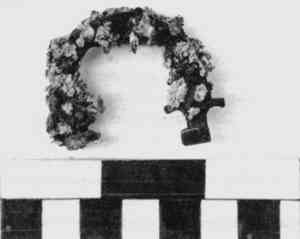CONSERVATION AND ARCHAEOLOGY IN GREAT BRITAIN AND THE UNITED STATES: A COMPARISONJESSICA S. JOHNSON
6 AMERICAN PREHISTORIC ARCHAEOLOGY AND PRESERVATIONIn the New World, prehistorians take as their field of study the archaeology of Native Americans until their contact with European explorers. Since the development of archaeology out of American antiquarianism in the late 1800s, this archaeology has been allied with cultural anthropology, physical anthropology, and linguistics as the discipline of anthropology. The four anthropological disciplines developed as different aspects of a holistic study of the American Indian (Trigger 1978). To quote a well-worn phrase used by these archaeologists, “American archaeology is anthropology or it is nothing” (Willey and Phillips 1958, 4). Generally, American classical archae-ologists and anthropological archaeologists share little in terms of interests and theoretical and methodological principles. They work in separate departments in universities, excavate different sites, and analyze their objects differently. Their research interests are often completely different, sometimes at odds. In general, classical archaeology has supported conservation in the U.S., while anthropological archaeology has little knowledge of conservation. Willey and Sabloff (1980) have traced the beginnings of professional anthropological archaeology to between 1840 and 1914, the same period when scientific prehistoric archaeology was developing in Britain. Before this time, as in early British archaeology, excavation was done out of simple curiosity and a desire to discover interesting and precious objects. In America, this early archaeology was also accompanied by descriptions of the native peoples encountered by Europeans. Anthropological interaction with Native Americans reflected the more generally held Anglo-European attitude, which viewed Indian cultures as primitive, inherently static, and inferior (Trigger 1980). Remains of complex cultures such as those found in the Midwest were attributed to non-Indian “Mound Builders,” a vanished race. This archaeological and ethnographic material was deposited in natural history museums and generally accorded lower status than European-derived historical and art objects (NIC 1984). During the next period of archaeological development (as defined by Willey and Sabloff 1980), from about 1914 to 1960, researchers began “systematic description of archaeological remains and monuments and the classification of these data in accordance Among American archaeologists, there is perceived to be a much greater variety of material found in Old World sites (Teague 1989). One major material that is not common in the New World, especially in North America, but is frequently recovered in the Old World after the late Neolithic is metal. Native copper, found in the Midwest, and other nonferrous metalwork in South America are major exceptions. Metals (excluding pure gold) can begin to corrode quite quickly and obviously after excavation, sometimes leading to the complete deterioration of the material (fig. 3). Successful stabilization of metals requires a good understanding of the chemical and physical interactions that result in its deterioration. Much of Rathgen and Scott's early research had been concerned with the stabilization of metals. The lack of metal artifacts may have been another reason American archaeologists did not look to other experts for help in preservation. Significantly, American historical archaeology, with its wide range of materials, including metals, has been more supportive of conservation than prehistoric archaeology. Hodges (1989) also notes that conservation has been readily accepted by archaeologists working in areas where waterlogged material is recovered (Grattan 1988). Wood is another material that quickly and obviously deteriorates if not protected after excavation.
Although American archaeologists may not have understood the importance of a knowledge of the chemistry and physics of deterioration, they did develop and use techniques for “preservation.” American anthropological archaeologists often use the term “preservation” to signify maintenance of the morphological structure of an excavated artifact. So, for example, “preservatives” are applied to bone to consolidate the structure. Similarly, “preservative” insect repellants have been sprayed on organic
A large amount of technical information is passed throughout the archaeological world by word of mouth, through archaeological field schools and other practical training. In many cases the original development and application of the technique is unknown to the practitioner. Many of the techniques developed by American archaeologists were practical and useful when they were originally used. However, they have been used without understanding the chemistry and physics of the processes. At times these techniques have created problems that have to be dealt with much later (Odegaard and Jacobs 1988). In many cases, by the time active deterioration occurs the material is no longer the archaeologist's responsibility. The same techniques and materials that have caused damage to materials in the past, and continue to deteriorate or cause damage in artifacts stored in museums now, are still being used by American archaeologists in the field today. |
